

Adventure Awaits
Teach english in korea, finding teachers jobs in korea since 2001.
5 Star Rating

Read More Reviews from our Past Teachers
What’s Included in The Travel & Teach Program
From the time you apply to teach English in Korea to your last day there, we are by your side. And the best part? Our service to our teachers is 100% FREE!

☑ 100% FREE Job placement in Korea
☑ Step by step visa guidance and support
☑ Discounted TEFL certification courses
☑ Pre-departure preparation packages
☑ Discounted international travel insurance
☑ Plane ticket arrangement to Korea
☑ Airport pickup and transport to your school
Open Job Listings
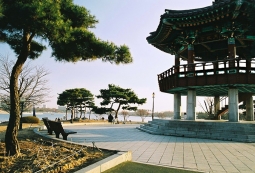
Teach English in Ilsan, Korea! | 2 Teachers needed
Location: Ilsan, South Korea Start: 04-01-2024 $/mth: 2.1 -2.2 million won Status: OPEN Job Code: IL2889
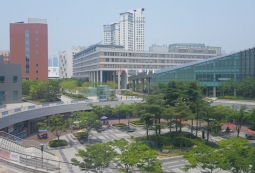
International School in Korea Needs 8 Teachers | High Pay, 4 weeks Vacation
Location: Incheon Korea Start: 03-01-2024 $/mth: 3-3.6 million won Status: OPEN Job Code: IS2443
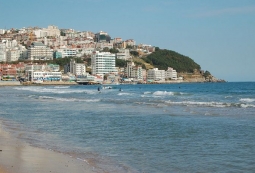
Teach English in Busan (Haeundae Beach) – 3 Teachers Needed
Location: Busan City, Korea Start: 05-15-2024 $/mth: 2.2-2.4 million won Status: OPEN Job Code: BUS8893

Teach English in Bundang Korea | High Salary + Great Location
Location: Bundang Korea Start: 05-01-2024 $/mth: 2.5 million won Status: OPEN Job Code: BUN4433
Teach English in Korea, Articles, Videos & FAQS
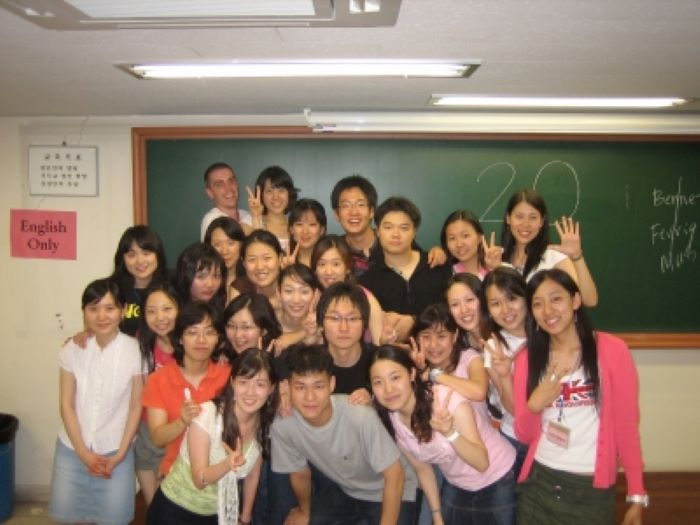
Absolutely Everything you Need to Know About Teaching English in Korea:
For many, the dream of becoming an English teacher in Korea begins far before it can become a reality. Once that reality comes true, it tends to be even more exciting and eye-opening than you would ever expect.

Required Documents for Teaching English in Korea:

How to Teach in Korea: The 9 Steps:
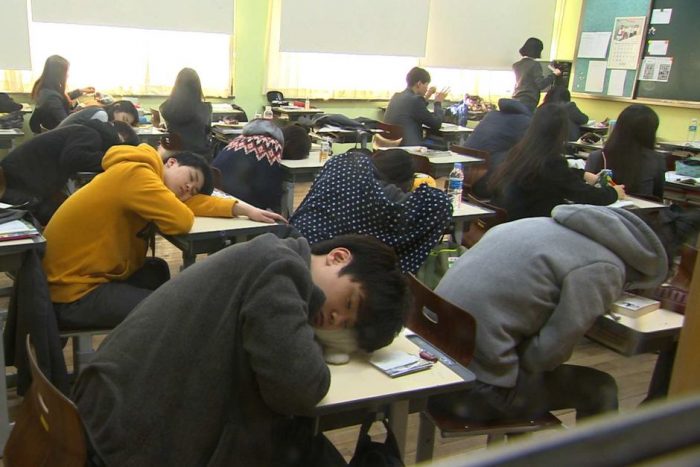
Private vs. Public Schools in Korea & The Death of EPIK
General information about teaching english in korea.
- What is the education required to teach English in Korea? A Bachelor’s degree/diploma in any major is required.
- How much is the average monthly pay? $1,900 – 2,500 USD. All contracts include a free single apartment + paid airfare.
- What is the cost of living per month in Korea? Around $500-$700 USD. This is dependent on your spending.
- How much is the job placement fee? $0. We do not charge teachers any fees for our service. We collect a fee from our schools instead.
- How much can I save each month teaching in Korea: Typical monthly savings range from $1,200 – 1,600 USD/month.
- What are the main hiring months in Korea? We have open positions each and every month of the year.
- What is the average number of teaching hours per week? 25-30 hours of in-class teaching. Lesson prep time is included in these hours.
- What benefits are provided by schools in Korea? Fully furnished single apartment, airfare, national pension + contract completion bonus.
- Is TEFL certification required to teach English in Korea? This will depend on your qualifications & experience. Read more about TEFL certification here .
- What type of students will I be teaching? Kindergarten, elementary and high school.
- How long is the teaching English in Korea program for? Contracts are for 12 months and can be extended after completion.
Teaching English in Korea: Real Stories from Real Teachers

An English Teacher in Korea: Ana’s Story

An English Teacher in Korea: Eduard’s Story

An English Teacher in Korea: Malayna’s Story

An English Teacher in Korea: Harrison’s Story
Korea teaching salary calculator.
Want to know how much money you can make teaching in Korea? Use our Salary Calculator to find out!
Find out how much money you will make teaching in English in Korea!
What best Describes you?

This is a unique website which will require a more modern browser to work! Please upgrade today!
TEACH BY TRAVEL, INC. Bankruptcy Filing
Basic information on teach by travel, inc. bankruptcy.
TEACH BY TRAVEL, INC. filed a 7 chapter bankruptcy in the District of Massachusetts bankruptcy court on March 18, 2024. This is a voluntary filing; it was assigned the bankruptcy case number #24-40259.
The bankruptcy petition for TEACH BY TRAVEL, INC. showed assets in the range of $0-$100,000 with liabilities in the range of $100,001-$1,000,000. TEACH BY TRAVEL, INC. reports that the number of creditors is in the range of 1-49.
The debtor indicated their nature of business as 'None of the Above'. The options for nature of business in bankruptcies are rather limited and archaic. They include 'Health Care Business', 'Single Asset Real Estate', 'Railroad', 'Stockbroker', 'Commodity Broker', 'Clearing Bank', or 'None of the Above'.
Unsecured Creditor Treatment in TEACH BY TRAVEL, INC. Bankruptcy:
TEACH BY TRAVEL, INC. indicated on its bankruptcy petition that it does not expect there will be sufficient assets in the estate to make a payment to the unsecured creditors.
Search for another bankruptcy case .
Access This Case for Only $30.00/month*
* Subscription fee does not include the cost of documents which may be purchased separately.
TEACH BY TRAVEL, INC. Bankruptcy Docket Header
Debted, coundue, what is the bankruptcyobserver database.
All bankruptcy reporting services in the United States are based on data initially published on PACER . BankruptcyObserver actively monitors all 95 US bankruptcy courts for newly filed bankruptcy cases and newly added bankruptcy docket entries, adding new bankruptcy data hourly. BankruptcyObserver's database of bankruptcy information includes all bankruptcies filed since 2005 (and many cases from before this date) which amounts to millions of bankruptcy cases and hundreds of millions of bankruptcy docket entries.
Anyone who has tried accessing bankruptcy data using PACER will attest to the fact that the service is not easy to use. There are nearly one hundred separate servers that might hold the data that you need and the forms you can use to query the data are very limiting. BankruptcyObserver makes the process of finding and monitoring bankruptcy cases easy. We have one database and we make the data easily accessible through an easy-to-use online interface. We also keep the data up to date, updating the bankruptcy cases every night and alerting subscribers to any changes every weekday (including holidays).
BankruptcyObserver offers the option of subscribing to monitor a single bankruptcy case or subscribing to access the entire bankruptcy database. Daily emails are provided updating subscribers on activities in any cases that they are monitoring and on new bankruptcy case filings.
What is a Chapter 7 Bankruptcy? What to Expect from a Chapter 7 Bankruptcy?
Bankruptcies in the United States are governed by federal rather than state law. This includes in small and individual bankruptcies. Anyone declaring bankruptcy files with a federal court in a region where the person or entity has some rational for association. (For organizations this reasoning behind choosing a particular bankruptcy court can become rather stretched. For example a company called Pacific Lumber which owned 210,000 acres of forest land in California, filed bankruptcy in Corpus Christi, Texas. This action has been derided as "venue shopping". The courts that have benefited the most from this behavior are the bankruptcy courts in Delaware, the Southern District of New York, and the Southern District of Texas. Joe Biden is infamous for aggressively protecting company's rights to venue shop as it favors his home state district.) Bankruptcy and the rights and rules related to bankruptcies appear in Title 11 of the United States Code , beginning at 11 U.S.C 101.
Typically when looking at bankruptcy, the first question to consider is what type of bankruptcy was filed. Types are typically called "chapters" because they correspond to specific chapters of the code inside of the Title 11. Strangely the Code is not like a book, that is there are some missing chapters. (These were probably removed by Congress in subsequent legislation?) So, when you say that this is a Chapter 11 bankruptcy, you mean that the bankruptcy follows the procedures outlined in chapter 11 of Title 11 of the U.S. Code, as amended. It's important to note the "as amended" because there have been several major changes throughout the years.
Chapter 7 bankruptcy, sometimes referred to as liquidation bankruptcy, is the most basic form of bankruptcy. Both individuals and entities (corporations, trusts, partnerships, limited liability companies) can file chapter 7. Unlike chapter 11 or chapter 13 bankruptcies, Chapter 7 Bankruptcies do not involve the filed of plan or reorganization or a plan of repayment. Chapter 7 provides for the liquidation or sale of the debtor’s property with the proceeds distributed to the debtor's creditors. Some assets, primarily for individuals, are "exempt" meaning that the debtor is allowed to keep the property and any creditor liens are removed. The liquidation is most often performed by a Chapter 7 trustee who may operate the business while an orderly sale is organized. The trustee is paid from the proceeds of the asset liquidation.
Individuals filing for chapter 7 must meet a specific means test, failure to meet the test will push the debtor to either a Chapter 13 or Chapter 11 bankruptcy. In Chapter 7 bankruptcy, the absolute priority rule stipulates the order in which debts are to be paid. Under this rule unsecured debt is separated into classes or categories, with each class receiving priority for payment. Secured debt is debt backed or secured by collateral to reduce the risk associated with lending, such as a mortgage. Unsecured priority debts are paid first. Examples of unsecured priority debts are tax debts, child support, and personal injury claims against the debtor. Secured debts are paid next. Last is the payment of nonpriority, unsecured debt with funds remaining from the liquidation of assets. If there are not sufficient funds to pay the nonpriority unsecured debt, then the debts are paid on a pro-rata basis.
A chapter 7 case begins with the debtor filing a petition with the bankruptcy court serving the area where the individual lives or where the business debtor is organized or has its principal place of business or principal assets. (3) In addition to the petition, the debtor must also file with the court: (1) schedules of assets and liabilities; (2) a schedule of current income and expenditures; (3) a statement of financial affairs; and (4) a schedule of executory contracts and unexpired leases. Fed. R. Bankr. P. 1007(b). Debtors must also provide the assigned case trustee with a copy of the tax return or transcripts for the most recent tax year as well as tax returns filed during the case (including tax returns for prior years that had not been filed when the case began). 11 U.S.C. § 521. Individual debtors with primarily consumer debts have additional document filing requirements. They must file: a certificate of credit counseling and a copy of any debt repayment plan developed through credit counseling; evidence of payment from employers, if any, received 60 days before filing; a statement of monthly net income and any anticipated increase in income or expenses after filing; and a record of any interest the debtor has in federal or state qualified education or tuition accounts. Id. A husband and wife may file a joint petition or individual petitions. 11 U.S.C. § 302(a). Even if filing jointly, a husband and wife are subject to all the document filing requirements of individual debtors.
Filing a petition under chapter 7 "automatically stays" (stops) most collection actions against the debtor or the debtor's property. 11 U.S.C. § 362. But filing the petition does not stay certain types of actions listed under 11 U.S.C. § 362(b), and the stay may be effective only for a short time in some situations. The stay arises by operation of law and requires no judicial action. As long as the stay is in effect, creditors generally may not initiate or continue lawsuits, wage garnishments, or even telephone calls demanding payments. The bankruptcy clerk gives notice of the bankruptcy case to all creditors whose names and addresses are provided by the debtor.
Between 21 and 40 days after the petition is filed, the case trustee (described below) will hold a meeting of creditors. If the U.S. trustee or bankruptcy administrator (5) schedules the meeting at a place that does not have regular U.S. trustee or bankruptcy administrator staffing, the meeting may be held no more than 60 days after the order for relief. Fed. R. Bankr. P. 2003(a). During this meeting, the trustee puts the debtor under oath, and both the trustee and creditors may ask questions. The debtor must attend the meeting and answer questions regarding the debtor's financial affairs and property. 11 U.S.C. § 343. If a husband and wife have filed a joint petition, they both must attend the creditors' meeting and answer questions. Within 10 days of the creditors' meeting, the U.S. trustee will report to the court whether the case should be presumed to be an abuse under the means test described in 11 U.S.C. § 704(b).
When a chapter 7 petition is filed, the U.S. trustee (or the bankruptcy court in Alabama and North Carolina) appoints an impartial case trustee to administer the case and liquidate the debtor's nonexempt assets. 11 U.S.C. §§ 701, 704. If all the debtor's assets are exempt or subject to valid liens, the trustee will normally file a "no asset" report with the court, and there will be no distribution to unsecured creditors. Most chapter 7 cases involving individual debtors are no asset cases. But if the case appears to be an "asset" case at the outset, unsecured creditors (7) must file their claims with the court within 90 days after the first date set for the meeting of creditors. Fed. R. Bankr. P. 3002(c). A governmental unit, however, has 180 days from the date the case is filed to file a claim. 11 U.S.C. § 502(b)(9). In the typical no asset chapter 7 case, there is no need for creditors to file proofs of claim because there will be no distribution. If the trustee later recovers assets for distribution to unsecured creditors, the Bankruptcy Court will provide notice to creditors and will allow additional time to file proofs of claim. Although a secured creditor does not need to file a proof of claim in a chapter 7 case to preserve its security interest or lien, there may be other reasons to file a claim. A creditor in a chapter 7 case who has a lien on the debtor's property should consult an attorney for advice.
The primary role of a chapter 7 trustee in an asset case is to liquidate the debtor's nonexempt assets in a manner that maximizes the return to the debtor's unsecured creditors. The trustee accomplishes this by selling the debtor's property if it is free and clear of liens (as long as the property is not exempt) or if it is worth more than any security interest or lien attached to the property and any exemption that the debtor holds in the property. The trustee may also attempt to recover money or property under the trustee's "avoiding powers." The trustee's avoiding powers include the power to: set aside preferential transfers made to creditors within 90 days before the petition; undo security interests and other prepetition transfers of property that were not properly perfected under nonbankruptcy law at the time of the petition; and pursue nonbankruptcy claims such as fraudulent conveyance and bulk transfer remedies available under state law. In addition, if the debtor is a business, the bankruptcy court may authorize the trustee to operate the business for a limited period of time, if such operation will benefit creditors and enhance the liquidation of the estate. 11 U.S.C. § 721.
While most Chapter 7 bankruptcies are quick, some more complicated Chapter 7 bankruptcies can drag on for many years even decades. If it is an individual who has filed chapter 7, the individual may be dismissed quickly leaving the assets with the trustee to liquidate in a manner that the trustee believes will bring the greatest value to the estate.
How Long will the TEACH BY TRAVEL, INC. bankruptcy last?
Each bankruptcy is a unique set of facts, issues, and parties that makes it difficult to predict exactly how long a bankruptcy will last. There are some time limits that courts may or may not enforce that are intended to make sure that a bankruptcy case does not linger. The individual complexites of the TEACH BY TRAVEL, INC. bankruptcy will determine how long it will last. According to our bankruptcy database, since 2012 the average time for a bankruptcy filing from inception to closure is 322.76 days. Averages for each chapter of bankruptcy are:
- Average duration of Chapter 7 bankruptcy cases: 280.42 days
- Average duration of Chapter 9 bankruptcy cases: 569.42 days
- Average duration of Chapter 11 bankruptcy cases: 550.42 days
- Average duration of Chapter 12 bankruptcy cases: 792.72 days
- Average duration of Chapter 13 bankruptcy cases: 874.69 days
- Average duration of Chapter 15 bankruptcy cases: 780.71 days
What Should Bankruptcy Creditors Do?
Bankruptcies can be very daunting for creditor that have not gone through the process before. The most importance advice that we can offer is to stay up date. Bankruptcies occur over time and there may be long gaps of time where nothing seems to be happening and then there is a sudden flurry of activity. If you are listed as a creditor in a bankruptcy case, you will receive occasional notices from the court. Unless it is a large bankruptcy where a bankruptcy claims administrator has been hired to manage communications with creditors, notices from the court will most likely be handled through the mail. This means that you may not know about something happening in bankruptcy case until fairly late. You can get this information by obtaining a PACER login, finding the right court, logging into the court, entering the case number, pulling the docket report, and reading through it. But remember, you will be charged for doing this and you will have to remember to go through this laborious process again every few days. (Or you can just sign up with BankruptcyObserver and let us keep you up to date.)
Other suggestions for creditors:
- Know what type of bankruptcy has been filed. Bankruptcies are not all the same. Just because a company has filed bankruptcy does not mean that all hope is lost. In chapter 11 bankruptcies, the debtor will try to reorganize to be able to continue operating. Chapter 7 bankruptcies are where companies or individuals are simply liquidating their assets. In these cases, the a trustee will likely be appointed that will assess the assets in the estate and contact the creditors.
- File a claim. Depending upon the bankruptcy chapter, you may not be able to file a claim immediately. Check on this and make sure that you file a claim as soon as you can.
- Check whether it is likely to be a payment to unsecured creditors. Item number 13 on the debtor's bankruptcy petition is a checkbox where the debtor is required to indicate whether funds will be available for distribtution to unsecured creditors or whether after any administrative expenses are paid, no funds will be available for distribution to unsecured creditors.
All subscriptions to this site renew monthly. You can cancel at any time.
Please wait
Thank you for subscribing.
Your request is being processed.
Form Trouble
Welcome to BusinessBankruptcies.com!
Sign up for a free account to get access to data on case creditors, search for cases, and more.
Teach by Travel, Inc.
You have a few options to access the full details for this case.
Purchase single case.
Purchase this single case for a one-time fee of 39.95 and receive updates for the life of the case.
Access our Full Service
Subscribe for a full year and receive two months free!
Already have an account?
Subscribe to This Case
Follow this case and receive case update emails for the life of this case for a one-time fee of $39.95.
Last Checked
Liabilities

- Case Info rmation
Nearby Cases
Docket Entries by Day
Case Information
Associated cases.
Teach by Travel, Inc. 215 East Main Street East Brookfield, MA 01515 Tax ID / EIN: xx-xxx8024
Troy D. Morrison Morrison & Associates, P.C. 255 Park Avenue Suite 1000 Worcester, MA 01609 (508)793-8282 Fax : (508) 793-8212 Email: [email protected]
Richard King Office of US. Trustee 446 Main Street 14th Floor Worcester, MA 01608
Jack E. Houghton 78 Bartlett Avenue Pittsfield, MA 01201 413-447-7385
Download {{title}}
This file is unavailable. Usually this is because it is not available in PACER. Please contact customer service if you need more details.
{{#gets_petition_free}} The petition file is free for subscribers. {{/gets_petition_free}} {{^user_has_access}} This docket file costs {{cost}} . Docket file purchases are non-refundable. {{/user_has_access}} {{#user_is_admin}} This docket file costs {{cost}} . Docket file purchases are non-refundable. {{/user_is_admin}}
You have already purchased this file, so you will not be charged to view it again.
If you click "Purchase File" your account will be charged this amount.
This file contains {{file_count}} parts
{{#has_purchased_all}} You have already purchased these files, so you will not be charged to view them again. {{/has_purchased_all}} {{^has_purchased_all}} {{^has_purchased_any}} If you click "Purchase File" for any file your account will be charged the corresponding amount. {{/has_purchased_any}} {{#has_purchased_any}} If you click "Purchase File" for any file your account will be charged the corresponding amount, except for green rows which have already been purchased and will not incur a charge. {{/has_purchased_any}} {{/has_purchased_all}}
Get ideas and news perfect for those planning student travel!

Teach & Travel is the leading source for educators who plan student travel. It is dedicated to helping educators understand the issues, trends and insights into the social and educational benefits of student travel. It provides information and tools to make the process of organizing student trips easy, convenient and safe. Teach & Travel also directs teachers to specialist student tour operators who help mitigate risk in travel planning. Teach & Travel is sponsored by the Student & Youth Travel Association (SYTA), whose mission is to provide life-enhancing travel experiences for students and to establish quality and safety standards for travel providers.
From a content perspective, Teach & Travel provides educator profiles—opportunities to learn from your peers—resources regarding health & safety, profile destinations to consider, and tools to help you gain support for student travel from your administrators and school boards. The print edition of Teach & Travel is read by over 93,000 educators!
To subscribe to the publication or our weekly eNewsletter, click below!
Contributor Inquiry
Interested in submitting an article for consideration in Teach & Travel magazine and/or our eNewsletter? Click here to let us know!
As stated above, Teach & Travel is sponsored by the Student & Youth Travel Association (SYTA). SYTA is the non-profit, professional trade association that promotes student & youth travel and seeks to foster integrity and professionalism among student and youth travel service providers.

Teach by Travel, Inc.
Teach by travel, inc. reviews ( 2 ).
Best in personalized service of ANY travel/tour agencies I have EVER used...and I have used many ANYTHING that you request attention of/for...they are on it! Great guys heading up a great business!
Best in personalized service of ANY travel/tour agencies I have EVER used...and I have used many. ANYTHING that you request attention of/for...they are on it! Great guys heading up a great business!
Write a review of Teach by Travel, Inc.
Teach by travel, inc. rating.
Description: Travel Agencies & Bureaus
Address: 215 East Main St., East Brookfield, Massachusetts, United States, 01515
Add contact information for Teach by Travel, Inc.
Winter is here! Check out the winter wonderlands at these 5 amazing winter destinations in Montana
- Travel Tips
How To Teach Travel And Tourism
Published: December 13, 2023
Modified: December 28, 2023
by Basia Gladden
- Plan Your Trip
- Travel Guide
Introduction
Welcome to the exciting world of travel and tourism education! Teaching travel and tourism is not only a rewarding career choice, but it also plays a vital role in shaping the future of the industry. Travel and tourism education equips students with the knowledge and skills needed to navigate this dynamic and multi-faceted field.
As the travel industry continues to grow and evolve, the demand for well-trained professionals is on the rise. This is where travel and tourism education comes in. Whether it’s guiding students in understanding the cultural, social, and economic impact of tourism, or teaching practical skills such as travel planning and hospitality management, educators play a crucial role in preparing the next generation of travel professionals.
In addition to preparing students for a future career in the industry, teaching travel and tourism also helps foster a sense of global citizenship and cultural awareness. Through interactive and engaging learning experiences, students gain a deeper understanding of the world, its diverse cultures, and the importance of sustainable travel practices.
Throughout this article, I will explore key concepts in travel and tourism education, effective teaching strategies, available learning resources, assessment methods, as well as the challenges and solutions in teaching travel and tourism.
So whether you’re an experienced travel and tourism educator looking for new ideas to enhance your teaching or someone considering a career in this field, this article will provide you with valuable insights and practical tips to make your travel and tourism education journey a successful one.
Importance of Teaching Travel and Tourism
Teaching travel and tourism is not just about imparting knowledge and skills; it is about shaping future industry professionals and creating a positive impact on the global economy and society as a whole. Here are some reasons highlighting the importance of teaching travel and tourism:
- Economic Impact: The travel and tourism industry is a significant driver of economic growth in many countries. By teaching students about the industry’s economic impact, including job creation, revenue generation, and foreign exchange earnings, educators contribute to building a strong workforce and promoting economic prosperity.
- Cultural Understanding: Travel and tourism education fosters cultural appreciation and understanding. Through learning about different destinations, customs, traditions, and languages, students develop a deeper appreciation for global diversity. This leads to a more interconnected and tolerant society.
- Sustainable Practices: In an era of increasing concern for the environment, teaching sustainable travel and tourism practices is crucial. By emphasizing the importance of responsible tourism, such as reducing carbon footprint, preserving natural resources, and respecting local communities, educators help shape environmentally conscious individuals who can contribute to a more sustainable future.
- Professional Development: The travel and tourism industry offers a wide range of career opportunities. By teaching students about different job roles, industry trends, and necessary skills, educators prepare them for successful careers in travel, hospitality, event management, tourism marketing, and more. This empowers students to pursue their passion and contribute to the growth of the industry.
- Global Citizenship: Teaching travel and tourism cultivates global citizenship by encouraging students to explore different cultures and engage with diverse communities. This not only broadens their perspective but also develops empathy, cultural sensitivity, and respect for others. It helps students become responsible global citizens who are aware of their impact on the world.
By recognizing and embracing the importance of teaching travel and tourism, educators can empower students to become future industry leaders, promote sustainable practices, and contribute to the growth and development of the sector. Through comprehensive education, students acquire the knowledge and skills necessary to succeed in a fast-paced and ever-evolving industry while making a positive impact on the world around them.
Key Concepts in Travel and Tourism Education
When teaching travel and tourism, there are several key concepts that form the foundation of a well-rounded education. These concepts help students develop a comprehensive understanding of the industry, its impact, and its various components. Here are some essential key concepts in travel and tourism education:
- Tourism Management: This concept focuses on understanding the principles and practices of managing tourism destinations, attractions, and businesses. Students learn about destination marketing, hospitality management, event planning, tour operations, and sustainable tourism practices.
- Cultural and Heritage Tourism: Cultural and heritage tourism emphasizes the exploration and preservation of unique cultural traditions, historical sites, and tangible and intangible heritage. Students delve into the significance of cultural tourism in promoting understanding and appreciation of diverse cultures.
- Travel and Tourism Marketing: Marketing plays a critical role in the travel and tourism industry. Students learn about marketing strategies, consumer behavior, digital marketing techniques, and destination branding. They explore how marketing can effectively promote destinations and attract tourists.
- Tourism Policy and Planning: This concept involves understanding the policies, regulations, and planning processes that govern the tourism industry. Students explore the role of governments, organizations, and stakeholders in shaping tourism development and ensuring its sustainability.
- Sustainable Tourism: Sustainable tourism emphasizes the importance of minimizing negative impacts on the environment, culture, and local communities while maximizing positive socio-economic benefits. Students learn about sustainable practices, responsible tourism, and the role of eco-tourism in preserving natural resources.
- Customer Service and Experience: The travel and tourism industry heavily relies on delivering exceptional customer service and creating memorable experiences for travelers. Students learn about customer service techniques, hospitality skills, and the importance of personalized experiences to enhance customer satisfaction.
These key concepts provide a comprehensive foundation for students in travel and tourism education. By understanding these essential concepts, students gain a holistic view of the industry, its challenges, and its potential. This knowledge equips them with the necessary skills and insights to excel in various roles within the travel and tourism sector.
Teaching Strategies for Travel and Tourism
Teaching travel and tourism requires a dynamic and engaging approach to ensure students grasp the concepts effectively. Here are some effective teaching strategies to enhance the learning experience:
- Real-World Case Studies: Use real-world case studies to provide practical examples that connect theory to the industry. This helps students understand how concepts apply in real-life scenarios and encourages critical thinking.
- Field Trips: Organize field trips to tourism destinations, hotels, or travel agencies to give students firsthand experience of the industry. This not only brings the learning to life but also exposes students to different job roles and operational processes.
- Guest Speakers: Invite guest speakers from the travel and tourism industry to share their experiences and insights with the students. This offers a valuable opportunity for students to learn directly from professionals and gain insights into industry trends and best practices.
- Group Projects: Assign group projects that require collaboration and problem-solving. This helps students develop teamwork skills and encourages them to apply their knowledge to real-world scenarios.
- Technology Integration: Utilize technology tools and resources to enhance learning. This can include virtual field trips, online simulations, interactive quizzes, and multimedia presentations. Incorporating technology keeps students engaged and allows for a more immersive learning experience.
- Role-Playing: Encourage role-playing activities where students take on different roles within the tourism industry. This helps develop their communication skills, problem-solving abilities, and decision-making capabilities.
- Industry Internships: Facilitate internships or work placements in tourism-related organizations to provide students with real-life work experience and develop industry-specific skills. This practical exposure contributes to a well-rounded education and enhances employability.
By employing these teaching strategies, educators can create a dynamic and interactive learning environment that fosters active participation and knowledge retention. It is important to remember that teaching travel and tourism should be a balance between theoretical knowledge and practical application to prepare students for the industry’s demands.

Learning Resources for Travel and Tourism Teaching
When it comes to teaching travel and tourism, utilizing a variety of learning resources can enrich the educational experience and cater to diverse learning styles. Here are some valuable learning resources for travel and tourism teaching:
- Textbooks and Reference Materials: Utilize textbooks and reference materials specifically designed for travel and tourism education. These resources provide a comprehensive overview of the industry, including concepts, theories, case studies, and best practices.
- Online Learning Platforms: Explore online platforms that offer specialized travel and tourism courses and learning modules. These platforms often include interactive lessons, quizzes, and discussion forums to facilitate engagement and knowledge retention.
- Professional Associations and Industry Websites: Many professional associations and industry websites provide access to a wealth of resources such as research papers, industry reports, statistical data, and industry-specific news. These resources can be used to enhance learning and provide the latest industry insights.
- Industry Events and Conferences: Encourage students to attend travel and tourism industry events, conferences, and trade shows. These events provide opportunities for networking, learning about industry trends, and gaining a deeper understanding of the industry’s current practices and challenges.
- Documentaries and Videos: Incorporate documentaries and videos related to travel and tourism into your teaching material. These visual resources can bring destinations, cultures, and tourism concepts to life, making the learning experience more engaging and memorable.
- Online Travel Platforms and Booking Websites: Introduce students to online travel platforms and booking websites such as Expedia or Airbnb. This allows them to explore travel itineraries, compare prices, and understand the role of technology in the travel and tourism industry.
- Industry Case Studies: Utilize industry case studies to demonstrate real-life examples and challenges within the travel and tourism sector. Analyzing these case studies helps students apply theoretical concepts to practical scenarios and develop problem-solving skills.
- Social Media and Blogs: Engage with travel and tourism-related social media accounts and blogs. These platforms provide up-to-date information, travel experiences, destination guides, and insights into the latest travel trends. Encouraging students to follow reputable sources helps them stay connected to the industry’s dynamic nature.
By utilizing a diverse range of learning resources, educators can cater to different learning preferences and create a well-rounded learning experience. It is essential to stay updated with the latest industry resources and encourage students to explore the vast array of available materials to foster a deeper understanding of the travel and tourism industry.
Assessment Methods in Travel and Tourism Education
Assessing student learning is a critical component of travel and tourism education. It allows educators to evaluate students’ understanding of key concepts, their ability to apply knowledge to practical scenarios, and their overall proficiency in the field. Here are some common assessment methods used in travel and tourism education:
- Examinations and Quizzes: Traditional examinations and quizzes are effective in assessing students’ understanding of foundational knowledge and their ability to recall information. These assessments can cover topics such as destination knowledge, industry terminology, tourism management principles, and marketing strategies.
- Case Studies and Written Assignments: Assigning case studies and written assignments allows students to apply their knowledge to real-world scenarios. These assessments can involve analyzing tourism development plans, developing marketing strategies for a destination, or evaluating the socio-cultural impacts of tourism.
- Group Projects and Presentations: Group projects and presentations encourage teamwork, critical thinking, and communication skills. Students can be tasked with designing a sustainable travel itinerary, creating a tourism marketing campaign, or presenting a research study on emerging trends in the industry.
- Practical Assessments and Simulations: Practical assessments involve hands-on activities that demonstrate students’ ability to perform specific tasks related to travel and tourism. This can include role-playing customer service scenarios, managing a simulated travel agency, or creating sample tour packages.
- Industry Internships and Work Placements: Assessing students during their industry internships or work placements provides an opportunity to evaluate their practical skills and professional conduct in a real-world setting. This can involve supervisor evaluations, reflective journals, and performance assessments.
- Online Assessments: Online assessments, such as quizzes and interactive modules, can be used to gauge students’ understanding of specific topics or concepts. These assessments can be self-paced and provide immediate feedback, promoting independent learning and knowledge retention.
- Peer Reviews and Feedback: Incorporating peer reviews and feedback allows students to evaluate each other’s work and provide constructive criticism. This promotes self-reflection, collaboration, and the development of analytical skills.
When selecting assessment methods, it is important to align them with the learning outcomes and objectives of the course. A combination of different assessment methods ensures that students are evaluated on various skills and competencies, including knowledge recall, critical thinking, problem-solving, teamwork, and industry-specific skills.
Furthermore, providing timely and constructive feedback to students is crucial. Feedback aids in their learning and growth, allowing them to identify areas for improvement and build upon their strengths. It also helps to encourage engagement and motivate students throughout their travel and tourism education journey.
Challenges and Solutions in Teaching Travel and Tourism
Teaching travel and tourism comes with its own set of challenges, but with the right strategies and solutions, these challenges can be overcome to create an effective learning experience. Here are some common challenges faced in teaching travel and tourism, along with potential solutions:
- Keeping Pace with Industry Changes: The travel and tourism industry is constantly evolving, with new trends, technologies, and practices emerging. To address this challenge, educators can stay updated with industry news, attend professional development programs, and collaborate with industry experts. This allows them to incorporate relevant and up-to-date information into their teaching methods.
- Engaging Diverse Learners: Tourism students come from diverse backgrounds and have different learning preferences. To engage these learners, educators can incorporate a variety of teaching strategies, such as case studies, group projects, role-playing activities, and technology-based learning. This ensures that different learning styles and preferences are accommodated, creating a more inclusive and engaging learning environment.
- Promoting Practical Skills: The travel and tourism industry relies heavily on practical skills. However, teaching these skills can be challenging in a classroom setting. To address this, educators can incorporate hands-on activities, simulations, industry internships, and guest speakers. These practical experiences provide students with opportunities to apply their knowledge and develop essential skills that are directly transferable to the industry.
- Fostering Cultural Sensitivity: As travel and tourism involve encounters with diverse cultures, it is important to foster cultural sensitivity among students. Educators can facilitate this by incorporating cultural experiences, promoting respectful interactions, and encouraging open dialogue. Guest speakers from different cultural backgrounds can also provide first-hand insights and help students develop a global perspective.
- Promoting Sustainable Tourism Education: Sustainable practices in travel and tourism are crucial for the industry’s future. Educators can address this challenge by integrating sustainability into the curriculum through case studies, discussions, and projects. Students can be encouraged to explore sustainable tourism practices and strategies, promoting the importance of responsible tourism and its impact on the environment and communities.
- Access to Industry Resources: Access to industry-specific resources and networks can be limited in an academic setting. To overcome this challenge, educators can forge partnerships with local tourism organizations, invite industry professionals as guest speakers, and utilize online resources, such as industry blogs, webinars, and research papers. This provides students with exposure to current industry practices and trends.
By recognizing and addressing these challenges, educators can create a more relevant and impactful learning experience for travel and tourism students. Through continuous professional development, engagement with industry partners, and an inclusive teaching approach, educators can equip students with the knowledge, skills, and cultural sensitivity required for successful careers in the dynamic travel and tourism industry.
Teaching travel and tourism is a fulfilling and important endeavor that prepares students for a dynamic and ever-expanding industry. By imparting knowledge, fostering skills, and promoting cultural understanding, educators play a crucial role in shaping future travel professionals and global citizens.
We have explored the importance of teaching travel and tourism, highlighting its economic impact, cultural significance, and role in promoting sustainability and global citizenship. We have also discussed key concepts in travel and tourism education, including tourism management, cultural and heritage tourism, and sustainable practices.
To enhance the learning experience, we have examined effective teaching strategies such as real-world case studies, field trips, and guest speakers. We have also discussed the importance of utilizing diverse learning resources, including textbooks, online platforms, and industry events, to provide a well-rounded education.
Assessing student learning in travel and tourism education is crucial, and we have explored various assessment methods such as examinations, group projects, and practical assessments. These methods enable educators to evaluate students’ understanding and proficiency in the field.
While challenges exist in teaching travel and tourism, we have provided solutions to overcome them. From staying updated with industry changes to fostering cultural sensitivity and promoting sustainable practices, educators can address these challenges through professional development, engaging teaching strategies, and industry partnerships.
In conclusion, teaching travel and tourism is an exciting opportunity to shape the future of the industry and inspire students to become well-rounded professionals. By embracing innovative teaching strategies, collaborating with industry partners, and nurturing a passion for travel and cultural understanding, educators can create a transformative learning experience that prepares students for success in the dynamic world of travel and tourism.

- Privacy Overview
- Strictly Necessary Cookies
This website uses cookies so that we can provide you with the best user experience possible. Cookie information is stored in your browser and performs functions such as recognising you when you return to our website and helping our team to understand which sections of the website you find most interesting and useful.
Strictly Necessary Cookie should be enabled at all times so that we can save your preferences for cookie settings.
If you disable this cookie, we will not be able to save your preferences. This means that every time you visit this website you will need to enable or disable cookies again.

Teach English in Moscow, Russia
The heart of Russia, Moscow , stands as a proud emblem of the country's rich history and its ambitious stride towards the future. Stretching its vast expanse across the banks of the Moskva River, the city boasts iconic landmarks like the Kremlin, St. Basil’s Cathedral, and the Bolshoi Theatre, all of which narrate tales of Russia’s tsarist past, Soviet era, and its contemporary significance. But beyond the historical and political importance, Moscow is a vibrant metropolis, bustling with modernity while still deeply rooted in its traditions. As a juxtaposition of the old and new, it offers a unique setting for English teachers looking to immerse themselves in a culture that's both familiar in its urban dynamics and intriguingly foreign in its customs and nuances.
Reasons to Teach English in Moscow
Demand for English : With Moscow's status as a global city and a significant business hub, there's a growing demand for English proficiency. Businesses, students, and even tourists seek English language skills, creating ample opportunities for English teachers.
Experience Rich Culture : Moscow is a treasure trove of arts, music, and literature. From the classical ballet performances at the Bolshoi Theatre to the literary legacy of writers like Tolstoy and Dostoevsky, teachers can immerse themselves in a deeply enriching cultural experience.
Competitive Salaries : The demand for native English speakers often comes with attractive salaries and benefits. While the cost of living can be high in the city center, smart budgeting and living slightly outside can offer a comfortable lifestyle.
Learning Russian : While teaching English, educators also get the chance to learn Russian, a language spoken by over 250 million people worldwide. It's not just an addition to your skill set but a window into understanding the Russian psyche and culture better.
Architectural Beauty : Moscow is an architectural paradise. From the onion domes of St. Basil’s to the modern skyscrapers of Moscow City, the urban landscape is a constant source of awe and wonder.
Gateway to Explore Russia : Moscow's extensive railway network and air connectivity make it a perfect base to explore the vast expanse of Russia, from the cultural streets of St. Petersburg to the natural wonders of Siberia.
Diverse Student Base : Teachers often find themselves instructing a mix of students, from young learners and university students to business professionals and retirees. This diversity makes the teaching experience varied and rewarding.
Experience Four Seasons : Moscow showcases all four seasons in their full glory. The snow-covered winter landscapes are iconic, but the spring blossoms, summer warmth, and autumn hues are equally mesmerizing.
Local Cuisine : Dive into the world of Russian gastronomy! From the hearty borscht and pelmeni to the sweet blini and syrniki, Moscow offers a culinary journey that's both diverse and delightful.
Unique Teaching Environment : Moscow has a mix of international schools, language centers, and private tutoring opportunities. This allows teachers to choose a teaching environment that aligns best with their preferences and expertise.
Understanding Moscow's Education Landscape
Moscow, being the capital city of Russia and its major economic, cultural, and scientific center, naturally has a dense concentration of educational institutions. The education landscape here is diverse, ranging from state-run schools and prestigious universities to private institutions and language centers. English is a sought-after language, and with Moscow's aspiration to be an influential player on the global stage, the emphasis on learning English has grown significantly.
There's a notable presence of international schools, catering primarily to expatriates and the elite class, which offers International Baccalaureate or British curricula. Additionally, language centers scattered across the city cater to various age groups and professions. Here, the focus might range from general English to more specialized courses like Business English. There's also a growing trend of private tutoring, where teachers offer personalized lessons to students, either one-on-one or in small groups.
Eligibility and Requirements to Teach English in Moscow
The requirements to teach English in Moscow will be similar to the standard requirements for teaching English in Russia , however, here are the specific requirements for Moscow:
Bachelor's Degree : A bachelor's degree in any field is typically required, though those with degrees in education or English might have an edge.
TEFL/TESOL/CELTA Certification : Most employers prefer candidates with a teaching certification, with a minimum of 120 hours of training.
Native English Speaker : Preference is often given to teachers from native English-speaking countries. However, non-native speakers with strong proficiency and credentials can also find opportunities.
Experience : Previous teaching experience, while not always mandatory, can significantly boost job prospects, especially in more esteemed institutions.
Background Check : A clean criminal record is essential, and a background check is standard procedure for most teaching positions.
Understanding of Russian Culture : While not a formal requirement, having an appreciation and understanding of Russian culture can be beneficial, both in the classroom and in day-to-day life.
Visa and Work Permit : It's crucial to secure the appropriate visa and work permit. Employers often assist with this process, but it's essential to ensure everything is in order.
Salary and Benefits for Teaching English in Moscow
Competitive Salaries : Depending on qualifications, experience, and the type of institution, monthly salaries can range from 60,000 to 120,000 Russian rubles. International schools and prestigious language centers tend to offer higher salaries.
Contract Completion Bonus : It's common for institutions to offer bonuses upon successful completion of a contract.
Health Insurance : Comprehensive health insurance is usually provided, which is a significant benefit given the varied quality of healthcare in Russia.
Paid Vacations : Teachers typically receive paid vacations, especially during significant public holidays and school breaks.
Professional Development : Some institutions offer or subsidize courses and workshops for teachers to further enhance their skills.
Contract Flexibility : Contracts can range from a few months for summer camps to a full academic year. Some contracts also offer the option for renewal.
Living in Moscow
The majestic and historical city of Moscow is Russia's pulsating heart, offering an eclectic blend of ancient traditions and modern urbanism. Living in Moscow presents a unique experience that's both challenging and rewarding. The city’s juxtaposition of centuries-old architecture with contemporary skyscrapers is a testament to its rich history and its eyes set firmly on the future.
1. Cultural and Historical Hub: Moscow is home to some of the world's most iconic landmarks, including the Kremlin, Red Square, and the Bolshoi Theatre. The city's museums, like the State Historical Museum and the Pushkin Museum, offer deep dives into Russia's intricate history and art.
2. Cost of Living: While salaries for English teachers are competitive, Moscow is one of the more expensive cities in Russia. Rent, dining out, and entertainment can be pricey, especially in the city center. However, with smart budgeting and by leveraging local markets and public transportation, it's manageable.
3. Transportation: Moscow boasts one of the world's most extensive metro systems. Not only is it efficient and affordable, but its stations are also often hailed as architectural masterpieces, adorned with mosaics, chandeliers, and sculptures. Buses and trams supplement the metro, making it easy to navigate the city.
4. Climate: Moscow experiences a continental climate, with cold winters where temperatures can drop below -20°C and warm summers that can reach up to 30°C. Snowfall during winters transforms the city into a winter wonderland, especially around the New Year when it's festively decorated.
5. Language: While Russian is the predominant language, younger generations and professionals often have a basic understanding of English. Still, learning basic Russian phrases can immensely help in daily life and is appreciated by locals.
6. Local Cuisine: Moscow offers a diverse culinary scene. Apart from international cuisines, traditional Russian dishes like borscht, pelmeni, and blinis are must-tries. The city also has a growing café culture, perfect for those who love their coffee.
7. Social Scene: The city is bustling with theaters, clubs, bars, and live music venues. Whether you're into classical performances at the Bolshoi or contemporary gigs at a local club, Moscow has something for every taste.
8. Safety: Like any major city, it's essential to be cautious, especially during the night or in less populated areas. However, Moscow generally has a low crime rate, especially concerning violent crimes against foreigners.
Teacher Stories
Sarah from usa:.
"When I first landed in Moscow, the cold was the first thing that hit me. But soon, the warmth of the people melted away all my apprehensions. Teaching English here has been an enriching experience. My students, eager to learn, showed me the true spirit of Russia. Plus, weekends exploring Red Square and trying out Russian cuisine have been nothing short of magical."
Liam from UK:
"I've always been intrigued by Russian literature. Living in Moscow, walking the streets that inspired writers like Tolstoy and Dostoevsky, has been surreal. Teaching English here has been challenging, given the language barrier, but it's equally rewarding. The joy in my student's eyes when they construct their first English sentence is unparalleled."
Anele from South Africa:
"I initially came to Moscow for a short stint, but the city's energy drew me in. Teaching here is different from back home. The methodology, the emphasis on grammar, and the sheer enthusiasm of students is commendable. And, of course, there's nothing like a warm bowl of borscht on a cold Moscow evening."
Siobhan from Ireland:
"I've taught in various countries, but Moscow stands out. The blend of history, culture, and the modern hustle is unique. The students here are disciplined and eager to grasp the nuances of the English language. On a personal note, the ballet performances at the Bolshoi are something I'll cherish forever."
Moving Towards Teaching English In Moscow
Moscow, with its sprawling landscapes, rich history, and vibrant urban life, promises an unparalleled experience for English teachers. While there are challenges, as with any foreign country, the rewards far surpass them. Not only does one get the opportunity to shape the global perspectives of young minds, but teachers also immerse themselves in a culture that is both profound and exhilarating.
For those considering taking the leap, Moscow awaits with open arms. The city offers more than just a job; it provides a journey through time, a deep dive into a rich tapestry of art, literature, and traditions, and memories that last a lifetime. As you stand on the brink of this exciting adventure, remember that teaching in Moscow is not just about imparting knowledge but also about growing, learning, and building bridges between cultures.

French Journal of English Studies
Home Numéros 59 1 - Tisser les liens : voyager, e... 36 Views of Moscow Mountain: Teac...
36 Views of Moscow Mountain: Teaching Travel Writing and Mindfulness in the Tradition of Hokusai and Thoreau
L'auteur américain Henry David Thoreau est un écrivain du voyage qui a rarement quitté sa ville natale de Concorde, Massachusetts, où il a vécu de 1817 à 1862. Son approche du "voyage" consiste à accorder une profonde attention à son environnement ordinaire et à voir le monde à partir de perspectives multiples, comme il l'explique avec subtilité dans Walden (1854). Inspiré par Thoreau et par la célèbre série de gravures du peintre d'estampes japonais Katsushika Hokusai, intitulée 36 vues du Mt. Fuji (1830-32), j'ai fait un cours sur "L'écriture thoreauvienne du voyage" à l'Université de l'Idaho, que j'appelle 36 vues des montagnes de Moscow: ou, Faire un grand voyage — l'esprit et le carnet ouvert — dans un petit lieu . Cet article explore la philosophie et les stratégies pédagogiques de ce cours, qui tente de partager avec les étudiants les vertus d'un regard neuf sur le monde, avec les yeux vraiment ouverts, avec le regard d'un voyageur, en "faisant un grand voyage" à Moscow, Idaho. Les étudiants affinent aussi leurs compétences d'écriture et apprennent les traditions littéraires et artistiques associées au voyage et au sens du lieu.
Index terms
Keywords: , designing a writing class to foster engagement.
1 The signs at the edge of town say, "Entering Moscow, Idaho. Population 25,060." This is a small hamlet in the midst of a sea of rolling hills, where farmers grow varieties of wheat, lentils, peas, and garbanzo beans, irrigated by natural rainfall. Although the town of Moscow has a somewhat cosmopolitan feel because of the presence of the University of Idaho (with its 13,000 students and a few thousand faculty and staff members), elegant restaurants, several bookstores and music stores, and a patchwork of artsy coffee shops on Main Street, the entire mini-metropolis has only about a dozen traffic lights and a single high school. As a professor of creative writing and the environmental humanities at the university, I have long been interested in finding ways to give special focuses to my writing and literature classes that will help my students think about the circumstances of their own lives and find not only academic meaning but personal significance in our subjects. I have recently taught graduate writing workshops on such themes as "The Body" and "Crisis," but when I was given the opportunity recently to teach an undergraduate writing class on Personal and Exploratory Writing, I decided to choose a focus that would bring me—and my students—back to one of the writers who has long been of central interest to me: Henry David Thoreau.
2 One of the courses I have routinely taught during the past six years is Environmental Writing, an undergraduate class that I offer as part of the university's Semester in the Wild Program, a unique undergraduate opportunity that sends a small group of students to study five courses (Ecology, Environmental History, Environmental Writing, Outdoor Leadership and Wilderness Survival, and Wilderness Management and Policy) at a remote research station located in the middle of the largest wilderness area (the Frank Church River of No Return Wilderness) in the United States south of Alaska. In "Teaching with Wolves," a recent article about the Semester in the Wild Program, I explained that my goal in the Environmental Writing class is to help the students "synthesize their experience in the wilderness with the content of the various classes" and "to think ahead to their professional lives and their lives as engaged citizens, for which critical thinking and communication skills are so important" (325). A foundational text for the Environmental Writing class is a selection from Thoreau's personal journal, specifically the entries he made October 1-20, 1853, which I collected in the 1993 writing textbook Being in the World: An Environmental Reader for Writers . I ask the students in the Semester in the Wild Program to deeply immerse themselves in Thoreau's precise and colorful descriptions of the physical world that is immediately present to him and, in turn, to engage with their immediate encounters with the world in their wilderness location. Thoreau's entries read like this:
Oct. 4. The maples are reddening, and birches yellowing. The mouse-ear in the shade in the middle of the day, so hoary, looks as if the frost still lay on it. Well it wears the frost. Bumblebees are on the Aster undulates , and gnats are dancing in the air. Oct. 5. The howling of the wind about the house just before a storm to-night sounds extremely like a loon on the pond. How fit! Oct. 6 and 7. Windy. Elms bare. (372)
3 In thinking ahead to my class on Personal and Exploratory Writing, which would be offered on the main campus of the University of Idaho in the fall semester of 2018, I wanted to find a topic that would instill in my students the Thoreauvian spirit of visceral engagement with the world, engagement on the physical, emotional, and philosophical levels, while still allowing my students to remain in the city and live their regular lives as students. It occurred to me that part of what makes Thoreau's journal, which he maintained almost daily from 1837 (when he was twenty years old) to 1861 (just a year before his death), such a rich and elegant work is his sense of being a traveler, even when not traveling geographically.
Traveling a Good Deal in Moscow
I have traveled a good deal in Concord…. --Henry David Thoreau, Walden (1854; 4)
4 For Thoreau, one did not need to travel a substantial physical distance in order to be a traveler, in order to bring a traveler's frame of mind to daily experience. His most famous book, Walden , is well known as an account of the author's ideas and daily experiments in simple living during the two years, two months, and two days (July 4, 1845, to September 6, 1847) he spent inhabiting a simple wooden house that he built on the shore of Walden Pond, a small lake to the west of Boston, Massachusetts. Walden Pond is not a remote location—it is not out in the wilderness. It is on the edge of a small village, much like Moscow, Idaho. The concept of "traveling a good deal in Concord" is a kind of philosophical and psychological riddle. What does it mean to travel extensively in such a small place? The answer to this question is meaningful not only to teachers hoping to design writing classes in the spirit of Thoreau but to all who are interested in travel as an experience and in the literary genre of travel writing.
5 Much of Walden is an exercise in deftly establishing a playful and intellectually challenging system of synonyms, an array of words—"economy," "deliberateness," "simplicity," "dawn," "awakening," "higher laws," etc.—that all add up to powerful probing of what it means to live a mindful and attentive life in the world. "Travel" serves as a key, if subtle, metaphor for the mindful life—it is a metaphor and also, in a sense, a clue: if we can achieve the traveler's perspective without going far afield, then we might accomplish a kind of enlightenment. Thoreau's interest in mindfulness becomes clear in chapter two of Walden , "Where I Lived, and What I Lived For," in which he writes, "Morning is when I am awake and there is a dawn in me. To be awake is to be alive. I have never yet met a man who was quite awake. How could I have looked him in the face?" The latter question implies the author's feeling that he is himself merely evolving as an awakened individual, not yet fully awake, or mindful, in his efforts to live "a poetic or divine life" (90). Thoreau proceeds to assert that "We must learn to reawaken and keep ourselves awake, not by mechanical aids, but by an infinite expectation of the dawn…. I know of no more encouraging fact than the unquestionable ability of man to elevate his life by a conscious endeavor" (90). Just what this endeavor might be is not immediately spelled out in the text, but the author does quickly point out the value of focusing on only a few activities or ideas at a time, so as not to let our lives be "frittered away by detail." He writes: "Simplicity, simplicity, simplicity! I say, let your affairs be as two or three, and not a hundred or a thousand; … and keep your accounts on your thumb nail" (91). The strong emphasis in the crucial second chapter of Walden is on the importance of waking up and living deliberately through a conscious effort to engage in particular activities that support such awakening. It occurs to me that "travel," or simply making one's way through town with the mindset of a traveler, could be one of these activities.
6 It is in the final chapter of the book, titled "Conclusion," that Thoreau makes clear the relationship between travel and living an attentive life. He begins the chapter by cataloguing the various physical locales throughout North America or around the world to which one might travel—Canada, Ohio, Colorado, and even Tierra del Fuego. But Thoreau states: "Our voyaging is only great-circle sailing, and the doctors prescribe for diseases of the skin merely. One hastens to Southern Africa to chase the giraffe; but surely that is not the game he would be after." What comes next is brief quotation from the seventeenth-century English poet William Habbington (but presented anonymously in Thoreau's text), which might be one of the most significant passages in the entire book:
Direct your eye sight inward, and you'll find A thousand regions in your mind Yet undiscovered. Travel them, and be Expert in home-cosmography. (320)
7 This admonition to travel the mysterious territory of one's own mind and master the strange cosmos of the self is actually a challenge to the reader—and probably to the author himself—to focus on self-reflection and small-scale, local movement as if such activities were akin to exploration on a grand, planetary scale. What is really at issue here is not the physical distance of one's journey, but the mental flexibility of one's approach to the world, one's ability to look at the world with a fresh, estranged point of view. Soon after his discussion of the virtues of interior travel, Thoreau explains why he left his simple home at Walden Pond after a few years of experimental living there, writing, "It is remarkable how easily and insensibly we fall into a particular route, and make a beaten track for ourselves" (323). In other words, no matter what we're doing in life, we can fall into a "beaten track" if we're not careful, thus failing to stay "awake."
8 As I thought about my writing class at the University of Idaho, I wondered how I might design a series of readings and writing exercises for university students that would somehow emulate the Thoreauvian objective of achieving ultra-mindfulness in a local environment. One of the greatest challenges in designing such a class is the fact that it took Thoreau himself many years to develop an attentiveness to his environment and his own emotional rhythms and an efficiency of expression that would enable him to describe such travel-without-travel, and I would have only sixteen weeks to achieve this with my own students. The first task, I decided, was to invite my students into the essential philosophical stance of the class, and I did this by asking my students to read the opening chapter of Walden ("Economy") in which he talks about traveling "a good deal" in his small New England village as well as the second chapter and the conclusion, which reveal the author's enthusiasm (some might even say obsession ) for trying to achieve an awakened condition and which, in the end, suggest that waking up to the meaning of one's life in the world might be best accomplished by attempting the paradoxical feat of becoming "expert in home-cosmography." As I stated it among the objectives for my course titled 36 Views of Moscow Mountain: Or, Traveling a Good Deal—with Open Minds and Notebooks—in a Small Place , one of our goals together (along with practicing nonfiction writing skills and learning about the genre of travel writing) would be to "Cultivate a ‘Thoreauvian' way of appreciating the subtleties of the ordinary world."
Windy. Elms Bare.
9 For me, the elegance and heightened sensitivity of Thoreau's engagement with place is most movingly exemplified in his journal, especially in the 1850s after he's mastered the art of observation and nuanced, efficient description of specific natural phenomena and environmental conditions. His early entries in the journal are abstract mini-essays on such topics as truth, beauty, and "The Poet," but over time the journal notations become so immersed in the direct experience of the more-than-human world, in daily sensory experiences, that the pronoun "I" even drops out of many of these records. Lawrence Buell aptly describes this Thoreauvian mode of expression as "self-relinquishment" (156) in his 1995 book The Environmental Imagination , suggesting such writing "question[s] the authority of the superintending consciousness. As such, it opens up the prospect of a thoroughgoing perceptual breakthrough, suggesting the possibility of a more ecocentric state of being than most of us have dreamed of" (144-45). By the time Thoreau wrote "Windy. Elms bare" (372) as his single entry for October 6 and 7, 1853, he had entered what we might call an "ecocentric zone of consciousness" in his work, attaining the ability to channel his complex perceptions of season change (including meteorology and botany and even his own emotional state) into brief, evocative prose.
10 I certainly do not expect my students to be able to do such writing after only a brief introduction to the course and to Thoreau's own methods of journal writing, but after laying the foundation of the Thoreauvian philosophy of nearby travel and explaining to my students what I call the "building blocks of the personal essay" (description, narration, and exposition), I ask them to engage in a preliminary journal-writing exercise that involves preparing five journal entries, each "a paragraph or two in length," that offer detailed physical descriptions of ordinary phenomena from their lives (plants, birds, buildings, street signs, people, food, etc.), emphasizing shape, color, movement or change, shadow, and sometimes sound, smell, taste, and/or touch. The goal of the journal entries, I tell the students, is to begin to get them thinking about close observation, vivid descriptive language, and the potential to give their later essays in the class an effective texture by balancing more abstract information and ideas with evocative descriptive passages and storytelling.
11 I am currently teaching this class, and I am writing this article in early September, as we are entering the fourth week of the semester. The students have just completed the journal-writing exercise and are now preparing to write the first of five brief essays on different aspects of Moscow that will eventually be braided together, as discrete sections of the longer piece, into a full-scale literary essay about Moscow, Idaho, from the perspective of a traveler. For the journal exercise, my students wrote some rather remarkable descriptive statements, which I think bodes well for their upcoming work. One student, Elizabeth Isakson, wrote stunning journal descriptions of a cup of coffee, her own feet, a lemon, a basil leaf, and a patch of grass. For instance, she wrote:
Steaming hot liquid poured into a mug. No cream, just black. Yet it appears the same brown as excretion. The texture tells another story with meniscus that fades from clear to gold and again brown. The smell is intoxicating for those who are addicted. Sweetness fills the nostrils; bitterness rushes over the tongue. The contrast somehow complements itself. Earthy undertones flower up, yet this beverage is much more satisfying than dirt. When the mug runs dry, specks of dark grounds remain swimming in the sunken meniscus. Steam no longer rises because energy has found a new home.
12 For the grassy lawn, she wrote:
Calico with shades of green, the grass is yellowing. Once vibrant, it's now speckled with straw. Sticking out are tall, seeding dandelions. Still some dips in the ground have maintained thick, soft patches of green. The light dances along falling down from the trees above, creating a stained-glass appearance made from various green shades. The individual blades are stiff enough to stand erect, but they will yield to even slight forces of wind or pressure. Made from several long strands seemingly fused together, some blades fray at the end, appearing brittle. But they do not simply break off; they hold fast to the blade to which they belong.
13 The point of this journal writing is for the students to look closely enough at ordinary reality to feel estranged from it, as if they have never before encountered (or attempted to describe) a cup of coffee or a field of grass—or a lemon or a basil leaf or their own body. Thus, the Thoreauvian objective of practicing home-cosmography begins to take shape. The familiar becomes exotic, note-worthy, and strangely beautiful, just as it often does for the geographical travel writer, whose adventures occur far away from where she or he normally lives. Travel, in a sense, is an antidote to complacency, to over-familiarity. But the premise of my class in Thoreauvian travel writing is that a slight shift of perspective can overcome the complacency we might naturally feel in our home surroundings. To accomplish this we need a certain degree of disorientation. This is the next challenge for our class.
The Blessing of Being Lost
14 Most of us take great pains to "get oriented" and "know where we're going," whether this is while running our daily errands or when thinking about the essential trajectories of our lives. We're often instructed by anxious parents to develop a sense of purpose and a sense of direction, if only for the sake of basic safety. But the traveler operates according to a somewhat different set of priorities, perhaps, elevating adventure and insight above basic comfort and security, at least to some degree. This certainly seems to be the case for the Thoreauvian traveler, or for Thoreau himself. In Walden , he writes:
…not until we are completely lost, or turned round,--for a man needs only be turned round once with his eyes shut in this world to be lost,--do we appreciate the vastness and strangeness of Nature. Every man has to learn the points of compass again as often as he awakes, whether from sleep or any abstraction. Not till we are lost, in other words, not till we have lost the world, do we begin to find ourselves, and realize where we are and the infinite extent of our relations. (171)
15 I could explicate this passage at length, but that's not really my purpose here. I read this as a celebration of salutary disorientation, of the potential to be lost in such a way as to deepen one's ability to pay attention to oneself and one's surroundings, natural and otherwise. If travel is to a great degree an experience uniquely capable of triggering attentiveness to our own physical and psychological condition, to other cultures and the minds and needs of other people, and to a million small details of our environment that we might take for granted at home but that accrue special significance when we're away, I would argue that much of this attentiveness is owed to the sense of being lost, even the fear of being lost, that often happens when we leave our normal habitat.
16 So in my class I try to help my students "get lost" in a positive way. Here in Moscow, the major local landmark is a place called Moscow Mountain, a forested ridge of land just north of town, running approximately twenty kilometers to the east of the city. Moscow "Mountain" does not really have a single, distinctive peak like a typical mountain—it is, as I say, more of a ridge than a pinnacle. When I began contemplating this class on Thoreauvian travel writing, the central concepts I had in mind were Thoreau's notion of traveling a good deal in Concord and also the idea of looking at a specific place from many different angles. The latter idea is not only Thoreauvian, but perhaps well captured in the eighteen-century Japanese artist Katsushika Hokusai's series of woodblock prints known as 36 Views of Mt. Fuji , which offers an array of different angles on the mountain itself and on other landscape features (lakes, the sea, forests, clouds, trees, wind) and human behavior which is represented in many of the prints, often with Mt. Fuji in the distant background or off to the side. In fact, I imagine Hokusai's approach to representing Mt. Fuji as so important to the concept of this travel writing class that I call the class "36 Views of Moscow Mountain," symbolizing the multiple approaches I'll be asking my students to take in contemplating and describing not only Moscow Mountain itself, but the culture and landscape and the essential experience of Moscow the town. The idea of using Hokusai's series of prints as a focal point of this class came to me, in part, from reading American studies scholar Cathy Davidson's 36 Views of Mount Fuji: On Finding Myself in Japan , a memoir that offers sixteen short essays about different facets of her life as a visiting professor in that island nation.
17 The first of five brief essays my students will prepare for the class is what I'm calling a "Moscow Mountain descriptive essay," building upon the small descriptive journal entries they've written recently. In this case, though, I am asking the students to describe the shapes and colors of the Moscow Mountain ridge, while also telling a brief story or two about their observations of the mountain, either by visiting the mountain itself to take a walk or a bike ride or by explaining how they glimpse portions of the darkly forested ridge in the distance while walking around the University of Idaho campus or doing things in town. In preparation for the Moscow Mountain essays, we read several essays or book chapters that emphasize "organizing principles" in writing, often the use of particular landscape features, such as trees or mountains, as a literary focal point. For instance, in David Gessner's "Soaring with Castro," from his 2007 book Soaring with Fidel: An Osprey Odyssey from Cape Cod to Cuba and Beyond , he not only refers to La Gran Piedra (a small mountain in southeastern Cuba) as a narrative focal point, but to the osprey, or fish eagle, itself and its migratory journey as an organizing principle for his literary project (203). Likewise, in his essay "I Climb a Tree and Become Dissatisfied with My Lot," Chicago author Leonard Dubkin writes about his decision, as a newly fired journalist, to climb up a tree in Chicago's Lincoln Park to observe and listen to the birds that gather in the green branches in the evening, despite the fact that most adults would consider this a strange and inappropriate activity. We also looked at several of Hokusai's woodblock prints and analyzed these together in class, trying to determine how the mountain served as an organizing principle for each print or whether there were other key features of the prints—clouds, ocean waves, hats and pieces of paper floating in the wind, humans bent over in labor—that dominate the images, with Fuji looking on in the distance.
18 I asked my students to think of Hokusai's representations of Mt. Fuji as aesthetic models, or metaphors, for what they might try to do in their brief (2-3 pages) literary essays about Moscow Mountain. What I soon discovered was that many of my students, even students who have spent their entire lives in Moscow, either were not aware of Moscow Mountain at all or had never actually set foot on the mountain. So we spent half an hour during one class session, walking to a vantage point on the university campus, where I could point out where the mountain is and we could discuss how one might begin to write about such a landscape feature in a literary essay. Although I had thought of the essay describing the mountain as a way of encouraging the students to think about a familiar landscape as an orienting device, I quickly learned that this will be a rather challenging exercise for many of the students, as it will force them to think about an object or a place that is easily visible during their ordinary lives, but that they typically ignore. Paying attention to the mountain, the ridge, will compel them to reorient themselves in this city and think about a background landscape feature that they've been taking for granted until now. I think of this as an act of disorientation or being lost—a process of rethinking their own presence in this town that has a nearby mountain that most of them seldom think about. I believe Thoreau would consider this a good, healthy experience, a way of being present anew in a familiar place.
36 Views—Or, When You Invert Your Head
19 Another key aspect of Hokusai's visual project and Thoreau's literary project is the idea of changing perspective. One can view Mt. Fuji from 36 different points of views, or from thousands of different perspectives, and it is never quite the same place—every perspective is original, fresh, mind-expanding. The impulse to shift perspective in pursuit of mindfulness is also ever-present in Thoreau's work, particularly in his personal journal and in Walden . This idea is particularly evident, to me, in the chapter of Walden titled "The Ponds," where he writes:
Standing on the smooth sandy beach at the east end of the pond, in a calm September afternoon, when a slight haze makes the opposite shore line indistinct, I have seen whence came the expression, "the glassy surface of a lake." When you invert your head, it looks like a thread of finest gossamer stretched across the valley, and gleaming against the distinct pine woods, separating one stratum of the atmosphere from another. (186)
20 Elsewhere in the chapter, Thoreau describes the view of the pond from the top of nearby hills and the shapes and colors of pebbles in the water when viewed from close up. He chances physical perspective again and again throughout the chapter, but it is in the act of looking upside down, actually suggesting that one might invert one's head, that he most vividly conveys the idea of looking at the world in different ways in order to be lost and awakened, just as the traveler to a distant land might feel lost and invigorated by such exposure to an unknown place.
21 After asking students to write their first essay about Moscow Mountain, I give them four additional short essays to write, each two to four pages long. We read short examples of place-based essays, some of them explicitly related to travel, and then the students work on their own essays on similar topics. The second short essay is about food—I call this the "Moscow Meal" essay. We read the final chapter of Michael Pollan's The Omnivore's Dilemma (2006), "The Perfect Meal," and Anthony Bourdain's chapter "Where Cooks Come From" in the book A Cook's Tour (2001) are two of the works we study in preparation for the food essay. The three remaining short essays including a "Moscow People" essay (exploring local characters are important facets of the place), a more philosophical essay about "the concept of Moscow," and a final "Moscow Encounter" essay that tells the story of a dramatic moment of interaction with a person, an animal, a memorable thing to eat or drink, a sunset, or something else. Along the way, we read the work of Wendell Berry, Joan Didion, Barbara Kingsolver, Kim Stafford, Paul Theroux, and other authors. Before each small essay is due, we spend a class session holding small-group workshops, allowing the students to discuss their essays-in-progress with each other and share portions of their manuscripts. The idea is that they will learn about writing even by talking with each other about their essays. In addition to writing about Moscow from various angles, they will learn about additional points of view by considering the angles of insight developed by their fellow students. All of this is the writerly equivalent of "inverting [their] heads."
Beneath the Smooth Skin of Place
22 Aside from Thoreau's writing and Hokusai's images, perhaps the most important writer to provide inspiration for this class is Indiana-based essayist Scott Russell Sanders. Shortly after introducing the students to Thoreau's key ideas in Walden and to the richness of his descriptive writing in the journal, I ask them to read his essay "Buckeye," which first appeared in Sanders's Writing from the Center (1995). "Buckeye" demonstrates the elegant braiding together of descriptive, narrative, and expository/reflective prose, and it also offers a strong argument about the importance of creating literature and art about place—what he refers to as "shared lore" (5)—as a way of articulating the meaning of a place and potentially saving places that would otherwise be exploited for resources, flooded behind dams, or otherwise neglected or damaged. The essay uses many of the essential literary devices, ranging from dialogue to narrative scenes, that I hope my students will practice in their own essays, while also offering a vivid argument in support of the kind of place-based writing the students are working on.
23 Another vital aspect of our work together in this class is the effort to capture the wonderful idiosyncrasies of this place, akin to the idiosyncrasies of any place that we examine closely enough to reveal its unique personality. Sanders's essay "Beneath the Smooth Skin of America," which we study together in Week 9 of the course, addresses this topic poignantly. The author challenges readers to learn the "durable realities" of the places where they live, the details of "watershed, biome, habitat, food-chain, climate, topography, ecosystem and the areas defined by these natural features they call bioregions" (17). "The earth," he writes, "needs fewer tourists and more inhabitants" (16). By Week 9 of the semester, the students have written about Moscow Mountain, about local food, and about local characters, and they are ready at this point to reflect on some of the more philosophical dimensions of living in a small academic village surrounded by farmland and beyond that surrounded by the Cascade mountain range to the West and the Rockies to the East. "We need a richer vocabulary of place" (18), urges Sanders. By this point in the semester, by reading various examples of place-based writing and by practicing their own powers of observation and expression, my students will, I hope, have developed a somewhat richer vocabulary to describe their own experiences in this specific place, a place they've been trying to explore with "open minds and notebooks." Sanders argues that
if we pay attention, we begin to notice patterns in the local landscape. Perceiving those patterns, acquiring names and theories and stories for them, we cease to be tourists and become inhabitants. The bioregional consciousness I am talking about means bearing your place in mind, keeping track of its condition and needs, committing yourself to its care. (18)
24 Many of my students will spend only four or five years in Moscow, long enough to earn a degree before moving back to their hometowns or journeying out into the world in pursuit of jobs or further education. Moscow will be a waystation for some of these student writers, not a permanent home. Yet I am hoping that this semester-long experiment in Thoreauvian attentiveness and place-based writing will infect these young people with both the bioregional consciousness Sanders describes and a broader fascination with place, including the cultural (yes, the human ) dimensions of this and any other place. I feel such a mindfulness will enrich the lives of my students, whether they remain here or move to any other location on the planet or many such locations in succession.
25 Toward the end of "Beneath the Smooth Skin of America," Sanders tells the story of encountering a father with two young daughters near a city park in Bloomington, Indiana, where he lives. Sanders is "grazing" on wild mulberries from a neighborhood tree, and the girls are keen to join him in savoring the local fruit. But their father pulls them away, stating, "Thank you very much, but we never eat anything that grows wild. Never ever." To this Sanders responds: "If you hold by that rule, you will not get sick from eating poison berries, but neither will you be nourished from eating sweet ones. Why not learn to distinguish one from the other? Why feed belly and mind only from packages?" (19-20). By looking at Moscow Mountain—and at Moscow, Idaho, more broadly—from numerous points of view, my students, I hope, will nourish their own bellies and minds with the wild fruit and ideas of this place. I say this while chewing a tart, juicy, and, yes, slightly sweet plum that I pulled from a feral tree in my own Moscow neighborhood yesterday, an emblem of engagement, of being here.
Bibliography
BUELL, Lawrence, The Environmental Imagination: Thoreau, Nature Writing, and the Formation of American Culture , Harvard University Press, 1995.
DAVIDSON, Cathy, 36 Views of Mount Fuji: On Finding Myself in Japan , Duke University Press, 2006.
DUBKIN, Leonard, "I Climb a Tree and Become Dissatisfied with My Lot." Enchanted Streets: The Unlikely Adventures of an Urban Nature Lover , Little, Brown and Company, 1947, 34-42.
GESSNER, David, Soaring with Fidel: An Osprey Odyssey from Cape Cod to Cuba and Beyond , Beacon, 2007.
ISAKSON, Elizabeth, "Journals." Assignment for 36 Views of Moscow Mountain (English 208), University of Idaho, Fall 2018.
SANDERS, Scott Russell, "Buckeye" and "Beneath the Smooth Skin of America." Writing from the Center , Indiana University Press, 1995, pp. 1-8, 9-21.
SLOVIC, Scott, "Teaching with Wolves", Western American Literature 52.3 (Fall 2017): 323-31.
THOREAU, Henry David, "October 1-20, 1853", Being in the World: An Environmental Reader for Writers , edited by Scott H. Slovic and Terrell F. Dixon, Macmillan, 1993, 371-75.
THOREAU, Henry David, Walden . 1854. Princeton University Press, 1971.
Bibliographical reference
Scott Slovic , “ 36 Views of Moscow Mountain: Teaching Travel Writing and Mindfulness in the Tradition of Hokusai and Thoreau ” , Caliban , 59 | 2018, 41-54.
Electronic reference
Scott Slovic , “ 36 Views of Moscow Mountain: Teaching Travel Writing and Mindfulness in the Tradition of Hokusai and Thoreau ” , Caliban [Online], 59 | 2018, Online since 01 June 2018 , connection on 01 April 2024 . URL : http://journals.openedition.org/caliban/3688; DOI : https://doi.org/10.4000/caliban.3688
About the author
Scott slovic.
University of Idaho Scott Slovic is University Distinguished Professor of Environmental Humanities at the University of Idaho, USA. The author and editor of many books and articles, he edited the journal ISLE: Interdisciplinary Studies in Literature and Environment from 1995 to 2020. His latest coedited book is The Routledge Handbook of Ecocriticism and Environmental Communication (2019).
By this author
- Introduction (version en français) [Full text] Introduction [Full text | translation | en] Published in Caliban , 64 | 2020
- To Collapse or Not to Collapse? A Joint Interview [Full text] Published in Caliban , 63 | 2020
- Furrowed Brows, Questioning Earth: Minding the Loess Soil of the Palouse [Full text] Published in Caliban , 61 | 2019
- Foreword: Thinking of “Earth Island” on Earth Day 2016 [Full text] Published in Caliban , 55 | 2016

The text only may be used under licence CC BY-NC-ND 4.0 . All other elements (illustrations, imported files) are “All rights reserved”, unless otherwise stated.
Full text issues
- 67-68 | 2022 Religious Dispute and Toleration in Early Modern Literature and History
- 65-66 | 2021 Peterloo 1819 and After: Perspectives from Britain and Beyond
- 64 | 2020 Animal Love. Considering Animal Attachments in Anglophone Literature and Culture
- 63 | 2020 Dynamics of Collapse in Fantasy, the Fantastic and SF
- 62 | 2019 Female Suffrage in British Art, Literature and History
- 61 | 2019 Land’s Furrows and Sorrows in Anglophone Countries
- 60 | 2018 The Life of Forgetting in Twentieth- and Twenty-First-Century British Literature
- 59 | 2018 Anglophone Travel and Exploration Writing: Meetings Between the Human and Nonhuman
- 58 | 2017 The Mediterranean and its Hinterlands
- 57 | 2017 The Animal Question in Alice Munro's Stories
- 56 | 2016 Disappearances - American literature and arts
- 55 | 2016 Sharing the Planet
- 54 | 2015 Forms of Diplomacy (16 th -21 st century)
- 53 | 2015 Representing World War One: Art’s Response to War
- 52 | 2014 Caliban and his transmutations
Anglophonia/Caliban
- Issues list
Presentation
- Editorial Policy
- Instructions for authors
- Ventes et abonnement
Informations
- Mentions légales et Crédits
- Publishing policies
Newsletters
- OpenEdition Newsletter
In collaboration with

Electronic ISSN 2431-1766
Read detailed presentation
Site map – Syndication
Privacy Policy – About Cookies – Report a problem
OpenEdition Journals member – Published with Lodel – Administration only
You will be redirected to OpenEdition Search
Watch CBS News
How to travel around the Francis Scott Key Bridge collapse in Baltimore: A look at the traffic impact and alternate routes
By Rohan Mattu
Updated on: April 1, 2024 / 8:13 AM EDT / CBS Baltimore
BALTIMORE -- The collapse of the Francis Scott Key Bridge in Baltimore early on the morning of March 26 led to a major traffic impact for the region and cut off a major artery into and out of the port city.
Drivers are told to prepare for extra commuting time until further notice.

Alternate routes after Francis Scott Key Bridge collapse
Maryland transit authorities quickly put detours in place for those traveling through Dundalk or the Curtis Bay/Hawkins Point side of the bridge. The estimated 31,000 who travel the bridge every day will need to find a new route for the foreseeable future.
The outer loop I-695 closure shifted to exit 1/Quarantine Road (past the Curtis Creek Drawbridge) to allow for enhanced local traffic access.
The inner loop of I-695 remains closed at MD 157 (Peninsula Expressway). Additionally, the ramp from MD 157 to the inner loop of I-695 will be closed.
Alternate routes are I-95 (Fort McHenry Tunnel) or I-895 (Baltimore Harbor Tunnel) for north/south routes.
Commercial vehicles carrying materials that are prohibited in the tunnel crossings, including recreation vehicles carrying propane, should plan on using I-695 (Baltimore Beltway) between Essex and Glen Burnie. This will add significant driving time.

Where is the Francis Scott Key Bridge?
The Key Bridge crosses the Patapsco River, a key waterway that along with the Port of Baltimore serves as a hub for East Coast shipping.
The bridge is the outermost of three toll crossings of Baltimore's Harbor and the final link in Interstate 695, known in the region as the Baltimore Beltway, which links Baltimore and Washington, D.C.
The bridge was built after the Baltimore Harbor Tunnel reached capacity and experienced heavy congestion almost daily, according to the MDTA.
Tractor-trailer inspections
Tractor-trailers that now have clearance to use the tunnels will need to be checked for hazardous materials, which are not permitted in tunnels, and that could further hold up traffic.
The MDTA says vehicles carrying bottled propane gas over 10 pounds per container (maximum of 10 containers), bulk gasoline, explosives, significant amounts of radioactive materials, and other hazardous materials are prohibited from using the Fort McHenry Tunnel (I-95) or the Baltimore Harbor Tunnel (I-895).
Any vehicles transporting hazardous materials should use the western section of I-695 around the tunnels, officials said.
- Francis Scott Key Bridge
- Bridge Collapse
- Patapsco River
Rohan Mattu is a digital producer at CBS News Baltimore. Rohan graduated from Towson University in 2020 with a degree in journalism and previously wrote for WDVM-TV in Hagerstown. He maintains WJZ's website and social media, which includes breaking news in everything from politics to sports.
Featured Local Savings
More from cbs news.

Salvage efforts begin at Francis Scott Key Bridge

Dundalk community stepping up for family of worker killed in Baltimore bridge collapse

Orioles honor three men who saved countless lives during the Key Bridge collapse

"Remarkably complex" puzzle to remove remnants of Key Bridge as more cranes arrive in Baltimore
We've detected unusual activity from your computer network
To continue, please click the box below to let us know you're not a robot.
Why did this happen?
Please make sure your browser supports JavaScript and cookies and that you are not blocking them from loading. For more information you can review our Terms of Service and Cookie Policy .
For inquiries related to this message please contact our support team and provide the reference ID below.

IMAGES
COMMENTS
Established in 2001, Travel & Teach Recruiting Inc. has placed 1000's of university graduates in teaching positions in cities across South Korea. With full visa and in-country support, Travel Teach is a leader in the ESL industry. We have always stayed close to our mission, which is to share our passion for traveling and teaching; as past ...
Contact Information. 215 East Main St. East Brookfield, MA 01515. Get Directions. Visit Website. Email this Business. (508) 637-1608. Business hours. 9:00 AM - 5:00 PM.
TEACH BY TRAVEL, INC. filed a 7 chapter bankruptcy in the District of Massachusetts bankruptcy court on March 18, 2024. This is a voluntary filing; it was assigned the bankruptcy case number #24-40259. The bankruptcy petition for TEACH BY TRAVEL, INC. showed assets in the range of $0-$100,000 with liabilities in the range of $100,001-$1,000,000
TEACH BY TRAVEL INC Travel Arrangements EAST BROOKFIELD, Massachusetts 2 followers Follow View all 5 employees Report this company About us ...
Find company research, competitor information, contact details & financial data for Teach By Travel, Inc. of East Brookfield, MA. Get the latest business insights from Dun & Bradstreet.
For young people, travel is an education in itself. It helps them build self-esteem, independence, tolerance and cultural understanding, while breaking down barriers to a child's personal, educational and social development. Patterns and habits embraced when traveling at an early age are known to influence future decisions.
Petition Chapter 7 Voluntary Petition for Non-Individuals All Schedules and Statements and Matrix. Filing Fee in the Amount of $338 Filed by Teach by Travel, Inc.. (Morrison, Troy) (Entered: 03/18/2024) Mar 18. 2. Disclosure of Compensation of Attorney Troy D. Morrison in the amount of $7500. Plus $338 paid to debtor`s counsel for court filing ...
About Teach By Travel Inc. Teach By Travel Inc is located at 215 E Main St in East Brookfield, Massachusetts 01515. Teach By Travel Inc can be contacted via phone at (508) 637-1608 for pricing, hours and directions.
Teach By Travel, Inc. is the only company located at 215 E Main St, East Brookfield, MA 01515--> Map View larger map Directions. Business Description Teach By Travel is located in East Brookfield, Massachusetts. This organization primarily operates in the Tourist Agency Arranging Transport, Lodging and Car Rental business / industry within the ...
ABOUT US. Teach & Travel is the leading source for educators who plan student travel. It is dedicated to helping educators understand the issues, trends and insights into the social and educational benefits of student travel.It provides information and tools to make the process of organizing student trips easy, convenient and safe.
Teach By Travel, Inc. (Co-Owner/Partner) :: A+ Rating with the BBB Managing Director Constructed data management web application system via LAMP stack that turned tasks done by hand/paper into ...
Established in 2001, Travel and Teach has stayed true to our commitment to our teachers and have placed 1000s of satisfied university graduates in amazing placements since then. Everyone at Travel and Teach has taught in Korea, so we understand - and prepare you accordingly - for your year (or more) ahead. With our Information Packages, 1st ...
Teach by Travel Inc (508) 637-1608. More. Directions Advertisement. 215 N Main St North Brookfield, MA 01535 Hours (508) 637-1608 Also at this address. North Brookfield Tax Collector. Suite A. Rel All. N Brookfield Town Assessors. Suite A. North Brookfield, Town. Suite A. Brown Electric Company ...
www.teachandtravel.org
Teach by Travel consumer reviews, complaints, customer service. Customer service contacts and company information.
Teaching travel and tourism requires a dynamic and engaging approach to ensure students grasp the concepts effectively. Here are some effective teaching strategies to enhance the learning experience: Real-World Case Studies: Use real-world case studies to provide practical examples that connect theory to the industry.
Salary and Benefits for Teaching English in Moscow. Competitive Salaries: Depending on qualifications, experience, and the type of institution, monthly salaries can range from 60,000 to 120,000 Russian rubles. International schools and prestigious language centers tend to offer higher salaries.
Walking tour around Moscow-City.Thanks for watching!MY GEAR THAT I USEMinimalist Handheld SetupiPhone 11 128GB https://amzn.to/3zfqbboMic for Street https://...
Address: Melnikova str. 2 | Phone: +7 (495) 276-4675. "Cabriolet". Our driving school is working from 1991 and is considered to be one of the most serious organizations in Moscow busy with drivers teaching. Address: Shmitovskiy proezd, 16 | Phone: +7 (495) 256-1574. Central Driving school. The school has seven branches in different city's ...
It occurs to me that "travel," or simply making one's way through town with the mindset of a traveler, could be one of these activities. 6 It is in the final chapter of the book, titled "Conclusion," that Thoreau makes clear the relationship between travel and living an attentive life. He begins the chapter by cataloguing the various physical ...
The estimated 31,000 who travel the bridge every day will need to find a new route for the foreseeable future. The outer loop I-695 closure shifted to exit 1/Quarantine Road (past the Curtis Creek ...
Major hotel chains including Marriott International Inc. and Hilton Worldwide Holdings Inc. are on track to more than double their footprint across Africa in the coming years as the continent sees ...
Apply Now for the Inc. 5000. Get recognized as one of America's fastest-growing private companies! Application Deadline April 26. Apply Now